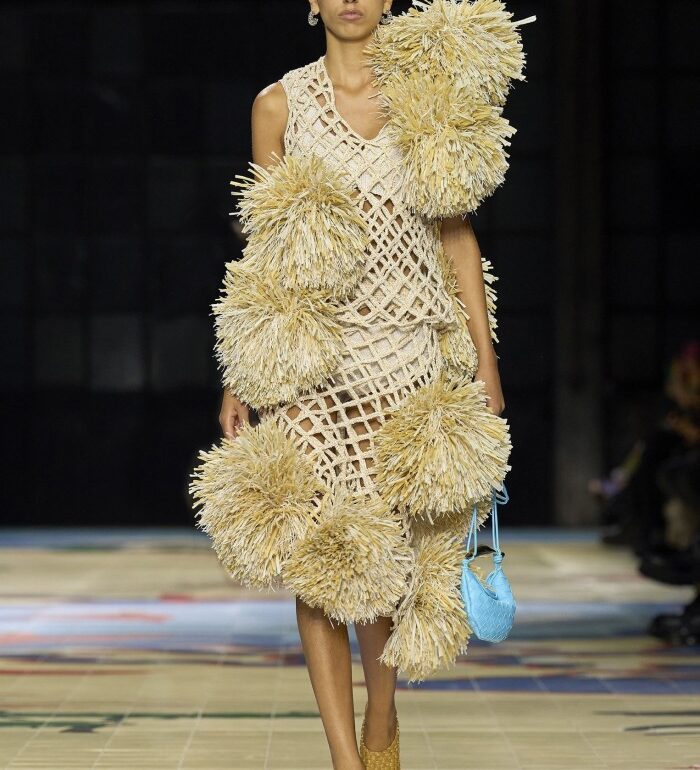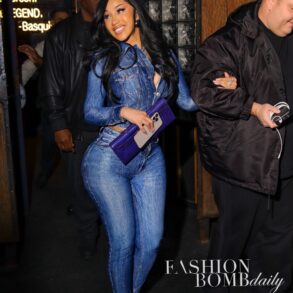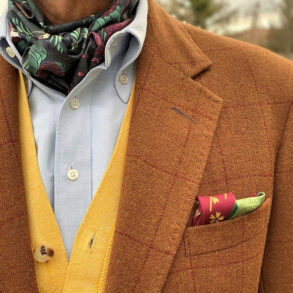At a time when much of Italian fashion is looking backwards and inwards — pillaging the house archives, reinforcing their DNA — Matthieu Blazy’s move to engage with the wider world on the final night of Milan Fashion Week offered a refreshing change of perspective.
The designer of Kering-owned Bottega Veneta called it “an odyssey”, one that took “inspiration from all over the world — South America, Southeast Asia, Russia, France, Italy,” he rattled off backstage afterwards. That included elements of landscape and of national dress, but interpreted loosely enough that specific references were difficult to detect (or shout down for cultural appropriation). The aim to enact a “journey that is physical but also in your mind,” he said.
For nearly six decades, Bottega Veneta has made bags and shoes for moving about the world in, and Blazy, who was born in Paris, has taken those ideas of travel and of movement — combined with the brand’s reputation for leather savoir-faire — as the starting point for each collection.
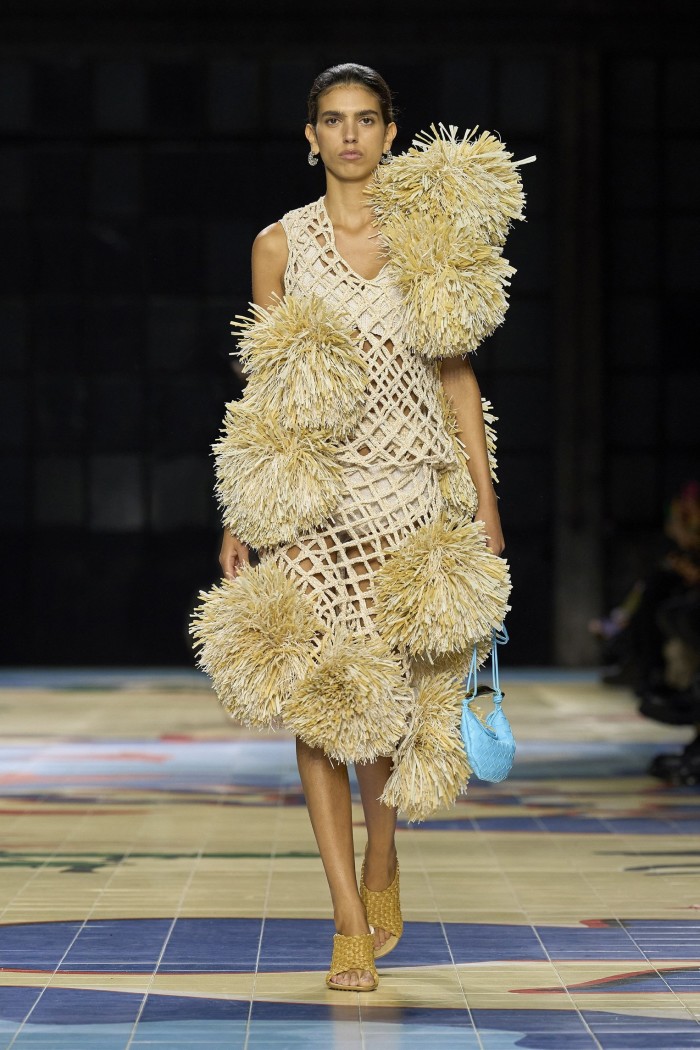
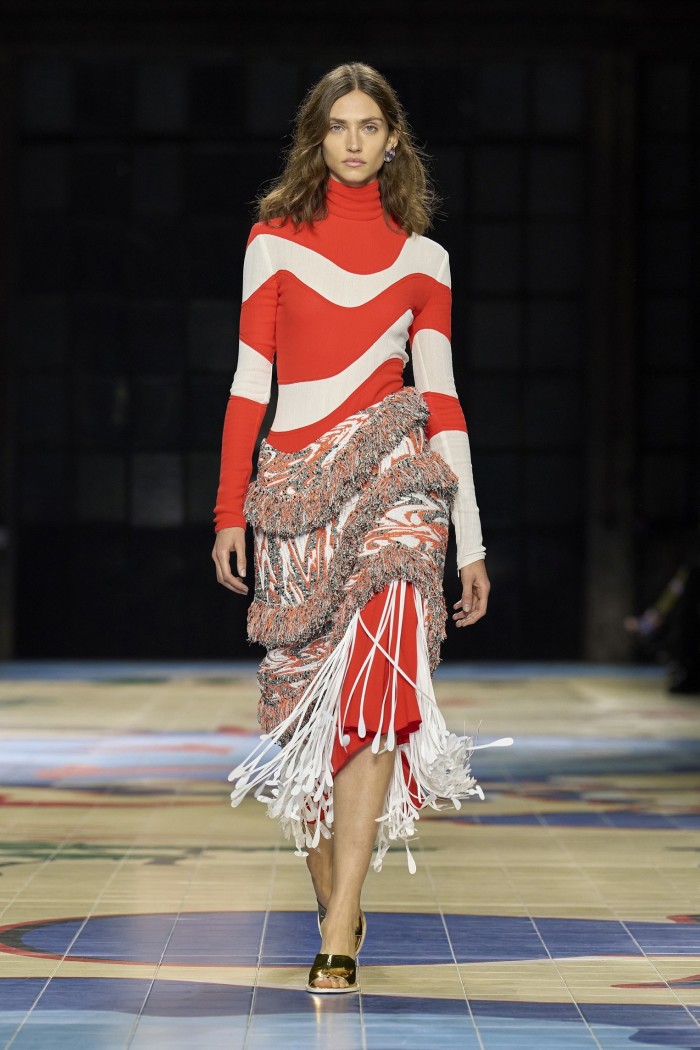







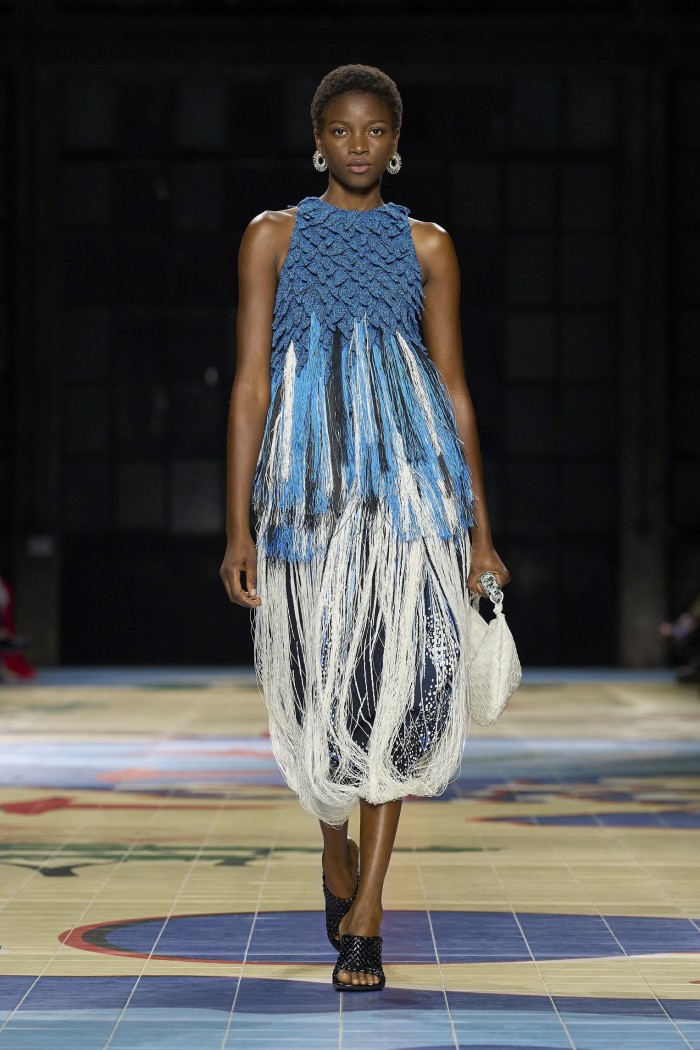



Here the floor was tiled with a playfully illustrated map, courtesy of French illustrator Claire Detallante, over which models strode in dark suits, cut wide and assertively on the shoulder, some with striped oxfords and glossy leather ties. These gave way to more homespun, nomadic fare: spiky or cross-hatched jumpers in graphic colours; leather skirts (for men and women) wrapped in the style of kilts or knotted like sarongs; and leather dresses cut as if swathed in tribal feathers. Single-shoulder knit dresses in marled streaks of ivory and ice blue called to mind the Antarctic, as if viewed from above.
Models’ feet were shod in wide backless moccasins and Intrecciato boots, and raffia-style leather sandals that snaked up the leg. Under their arms or over their shoulders were slung spacious carry-alls and woven duffel bags, out of which peeped leather replicas of foreign newspapers (at least one was salmon pink).
The craftsmanship, particularly the knitwear, was a cut above everything else shown thus far at fashion weeks — more like couture than ready-to-wear, and rivalled only distantly by Prada.
Maximilian Davis’s third runway collection for Ferragamo was very much rooted in ready-to-wear — or rather in tailored American sportswear — with sleek, colour-blocked separates in subtly textured fabrics: a softly deconstructed trenchcoat in wrinkled kelly green leather, a sleeveless dress of crisp pressed cotton wrapped with a thick braided belt. These were paired with beaded T-strap sandals and loafer-front mules (for women), and heavy peep-toe sandals and cleat-inspired trainers (for men).
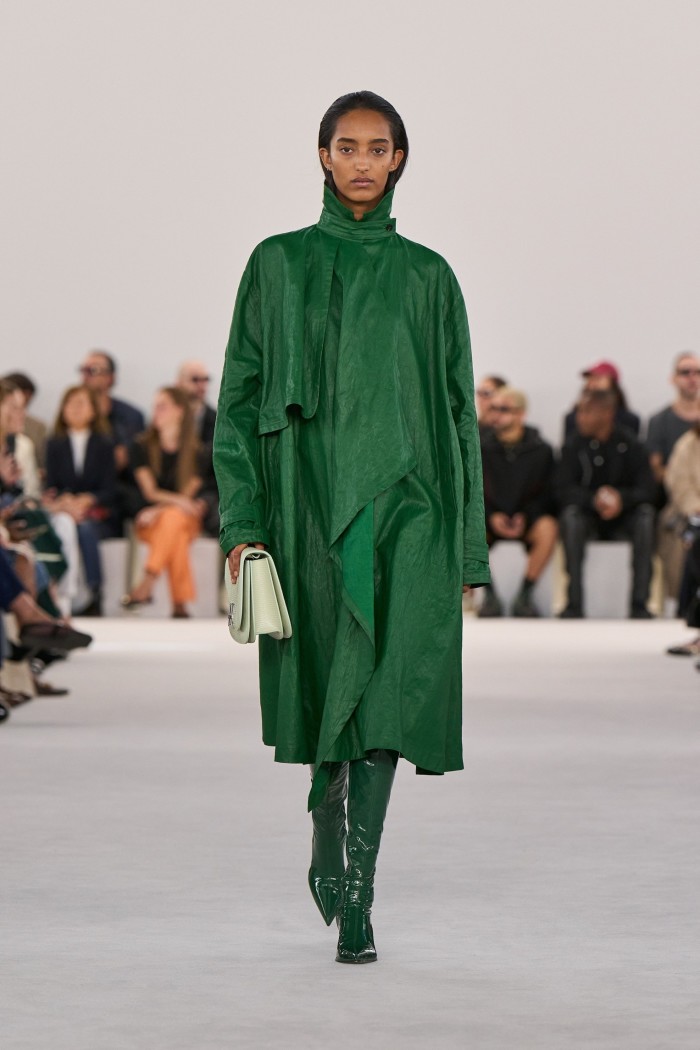



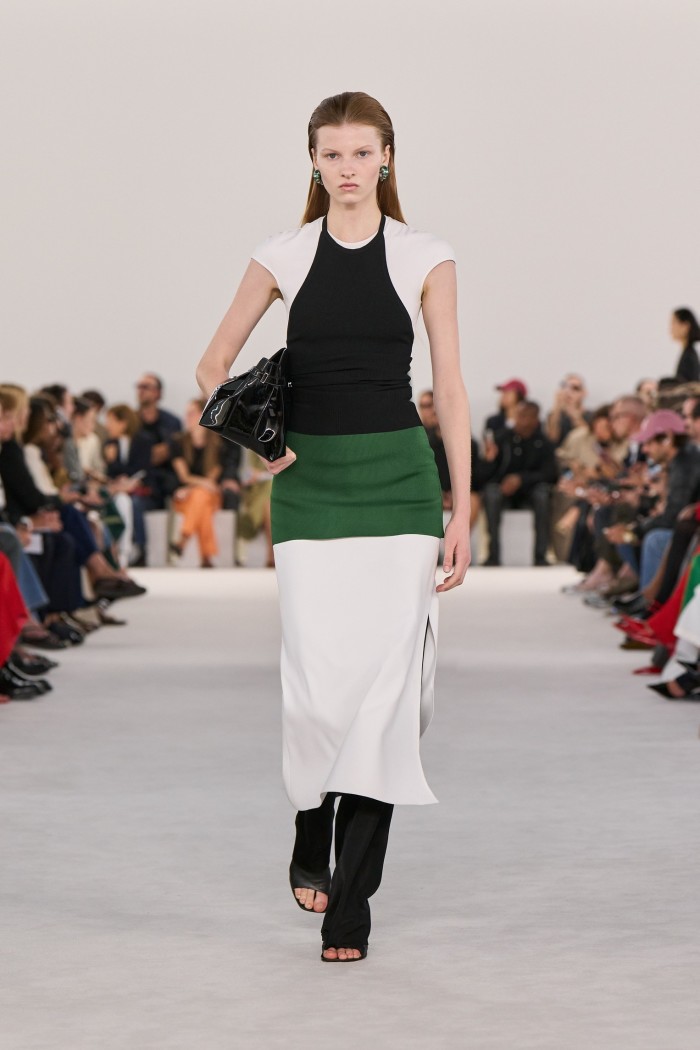



The 28-year-old Manchester native has proven an inspired hire — his clothes and campaigns have given Ferragamo a slicker finish. But he has not yet delivered a hit accessory, and the family-owned shoemaker’s fortunes remain in an unenviable state: sales in the first half of the year were down 7 per cent on a constant currency basis to €600mn, while operating profit halved to €47mn as the company increased its marketing spend.
Inspired too was the choice of new Bally design director Simone Bellotti, who previously spent 16 years at Gucci. The Swiss brand, which returned to the catwalk after a long hiatus in February 2022, was in a tight spot when its jet-set LA designer Rhuigi Villaseñor departed after just two collections that borrowed liberally from equestrian clothes and Tom Ford’s Gucci. Bellotti was promoted to the top post two weeks later, and his debut collection on Saturday made a terrific start at shaping the design identity Bally so sorely needs.
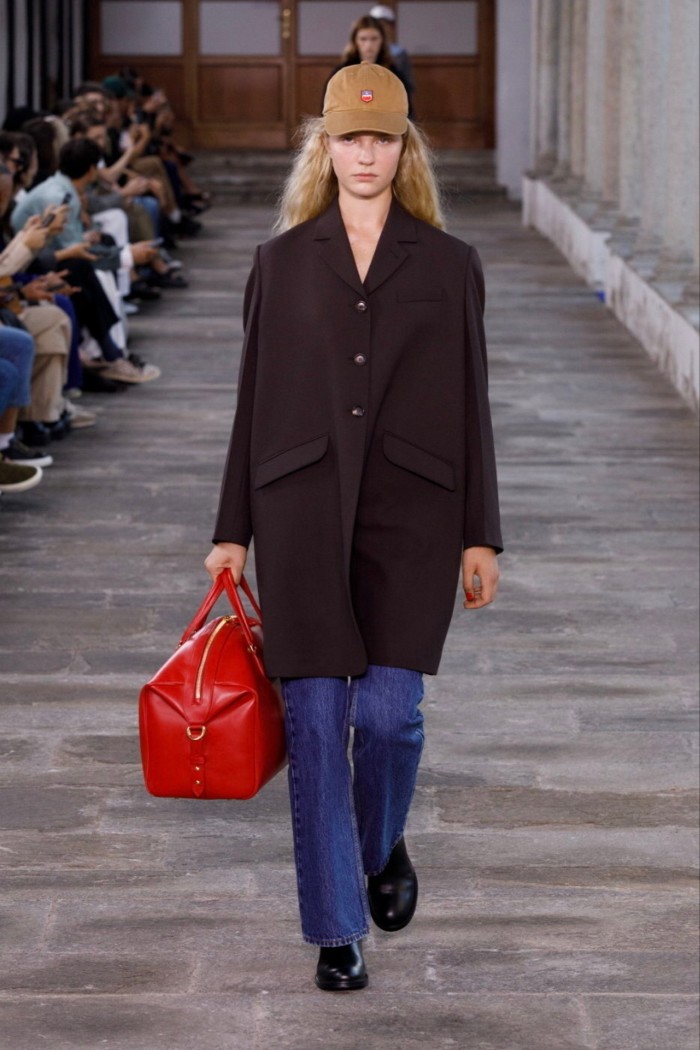



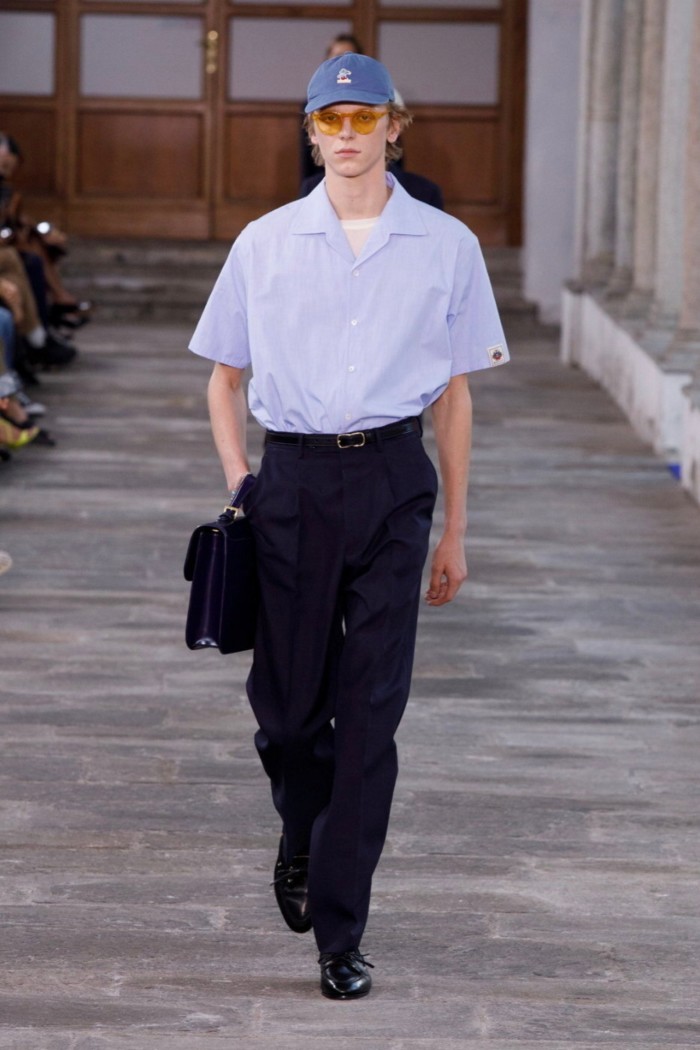



Among the formal rose and box-hedge garden of the Chiostro di San Simpliciano, and with members of the Gucci design team cheering him on, Bellotti presented a coolly refined idea of Swiss style — of stovepipe blue jeans and loosely tailored navy jackets fastened with a safety pin at the collar, and high-waisted wool shorts and trousers styled (for men and women) with baseball caps and unbrushed hair.
It was inspired by Monte Verità, “a utopian haven of alternative intellectuals and creative souls who settled in Ascona, Switzerland, at the turn of the 20th century”, read the show notes. Lofty, yes, but the collection was not without a sense of humour: structured saddle and briefcase-style bags of smooth calf leather — a real upgrade, both in design and quality, from the mock-croc creations of recent seasons — tinkled merrily with cow bells.
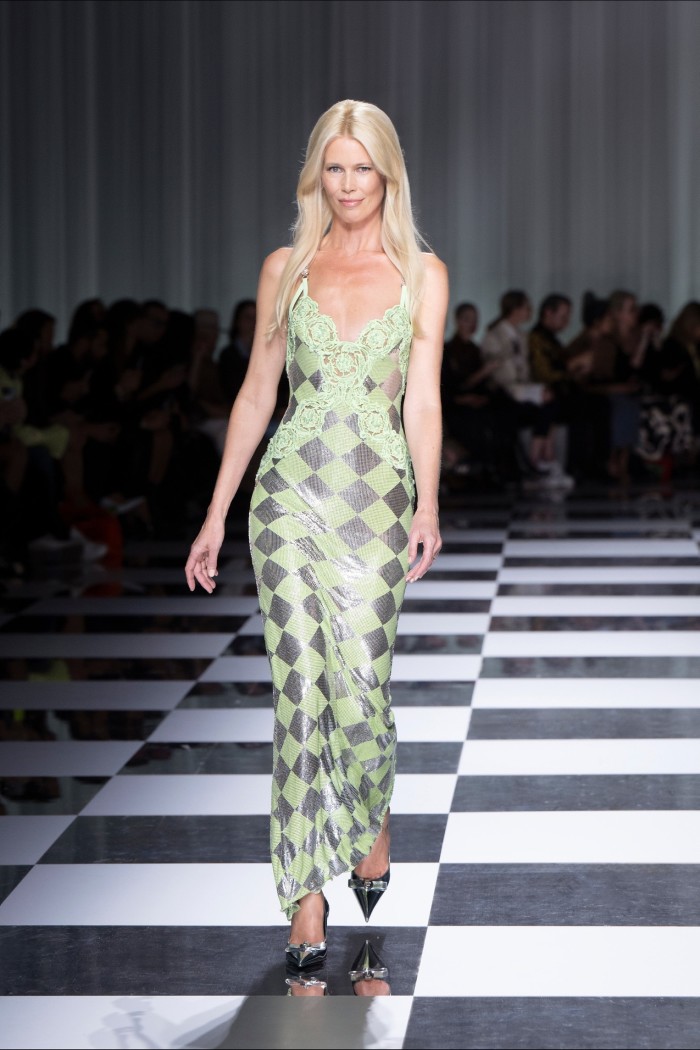



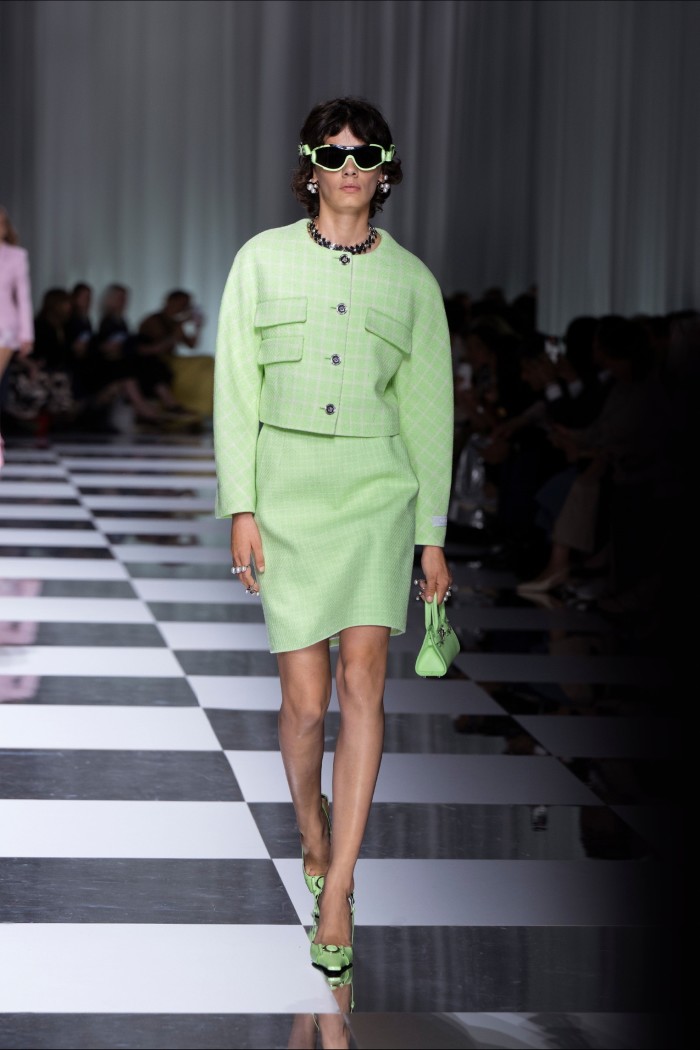



Humour has long been a hallmark of Versace under Donatella Versace — she has never shied away from the brand’s reputation for overt sexiness, and often pokes fun at it by sending muscly male models in tight briefs and unbuttoned pyjama tops down the catwalk. But since she sold the label to the American group Capri Holdings for $2.1bn in 2018, Versace has seemingly lost some of its soul — or developed some Puritan prudishness.
As other designers lean into the sexy and the sheer, this season she dressed her models as life-sized Barbies in ‘60s-ish pastel suits with matching pumps and bags and Medusa-stamped hair bows. Some carried large jacquard tote bags that bore an uncanny resemblance to Dior’s uber-successful Book Tote. I can’t pretend Versace’s va-va-voom aesthetic ever appealed to me on a personal level, but I missed it here.




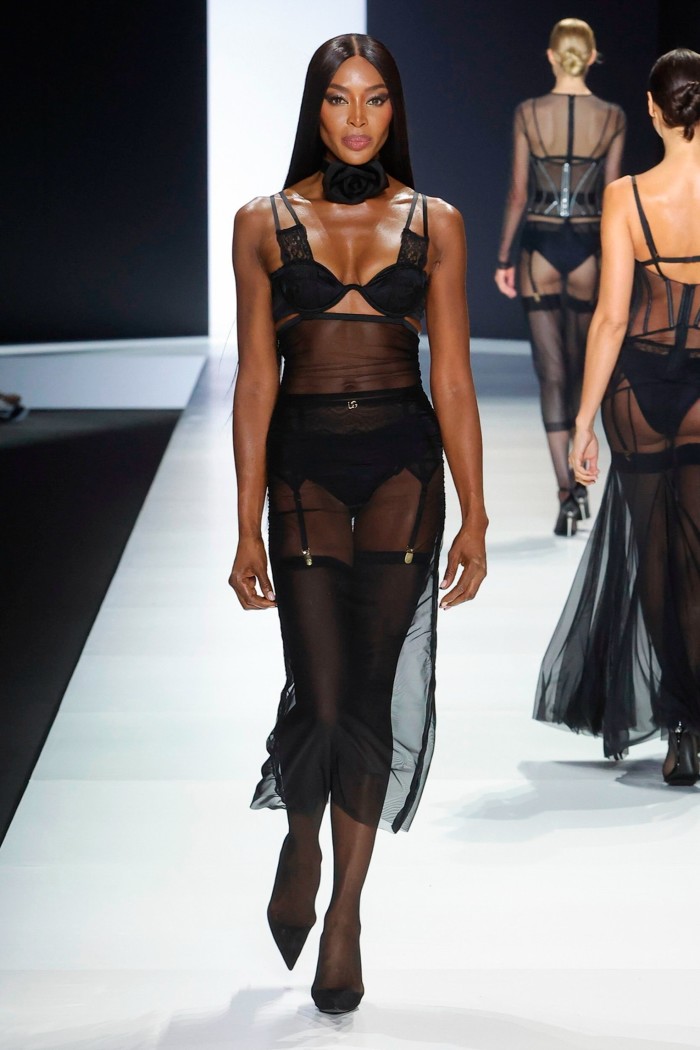



There was plenty of it at Dolce & Gabbana, where an outrageously ageless Naomi Campbell closed the show in a black silk bra and suspenders — the show was largely made up of well-executed lingerie — and at The Attico’s debut show. The partywear label, founded in early 2016 by street style stars turned designers Gilda Ambrosio and Giorgia Tordini, sold a 49 per cent stake to an investment group controlled by Moncler founder Remo Ruffini in 2018. They plopped plushy leather sofas on to a street off the Parco Sempione, between which models in dark glasses and unwashed hair strode in black leather co-ords that strained at the buttons, and shaggy rock star coats worn open over glittering bandeau tops and low-slung cargo trousers.
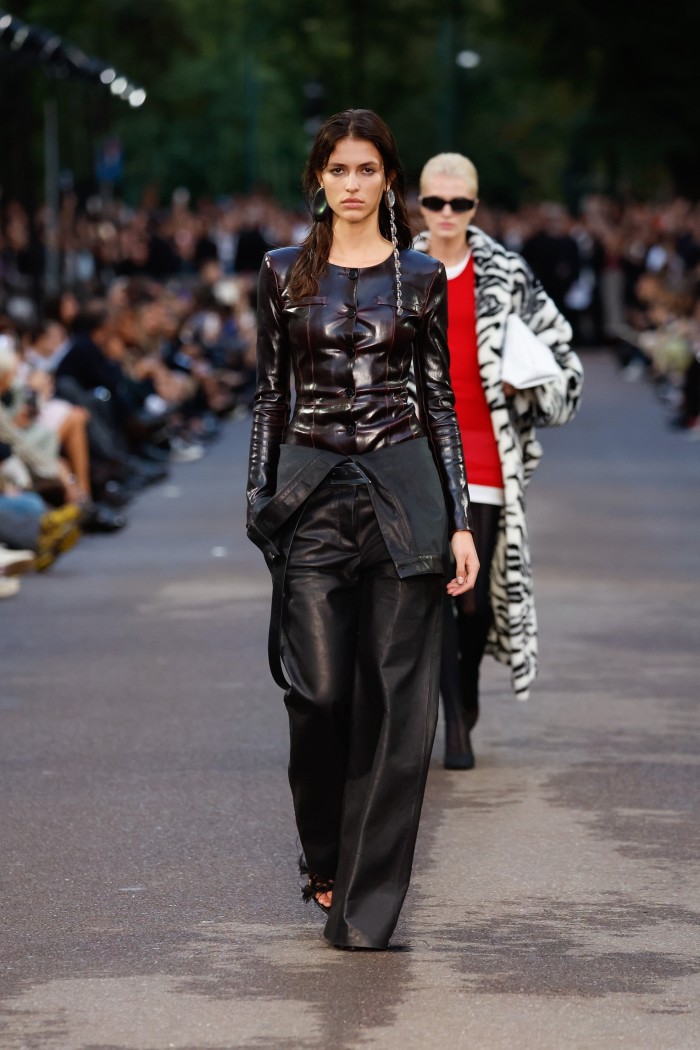







The Attico aside, fashion is still in “quiet luxury” mode. Though the week had plenty of colour — powder blue, hunter green, chocolate and red-orange were among the dominant shades — their combinations were complementary rather than clashing, and there was little in the way of pattern or print.
The shift away from maximalism could inspire shoppers to revisit Jil Sander, the 55-year-old German label steered by husband-and-wife duo Luke and Lucie Meier and acquired in 2021 by Italian group OTB. But it can also make it more difficult for the label’s collections to stand out. When everyone else goes minimalist, where does the exemplar of minimalism go?
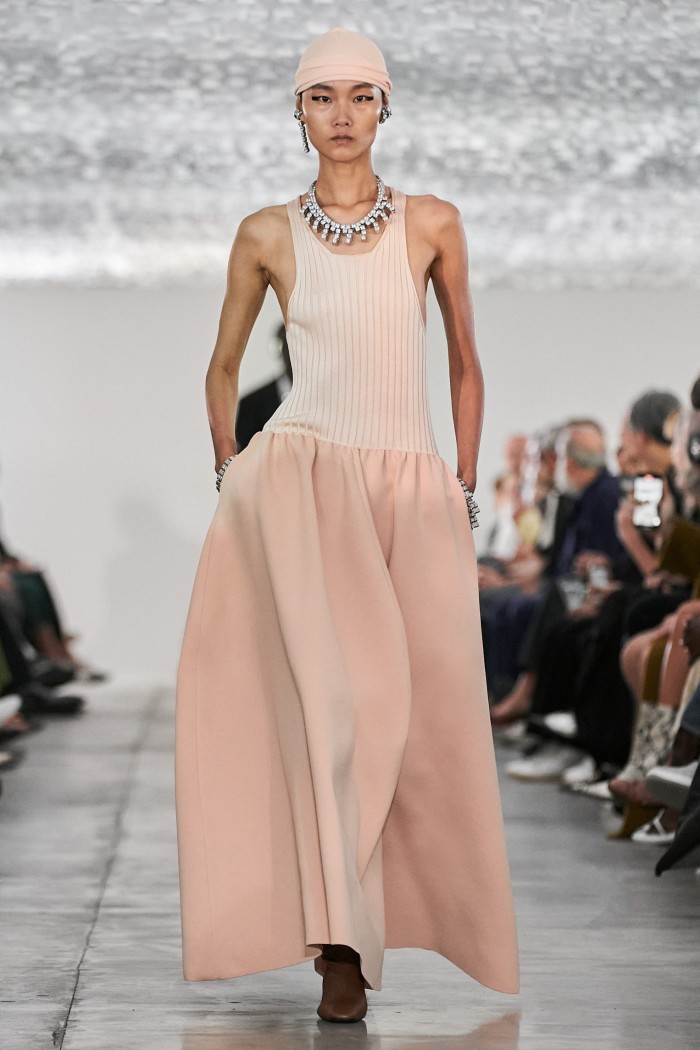



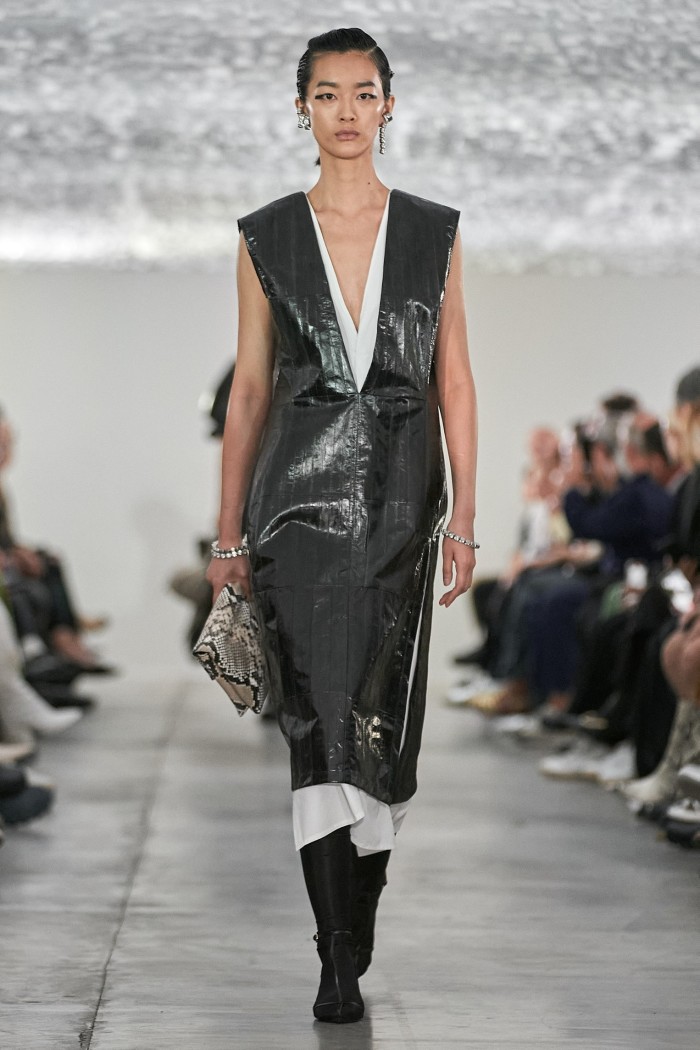



Fast in the opposite direction appeared to be last season’s answer, with its zebra-print dresses and electric-blue and yellow leather separates. But this collection was all whispery lightness, and though it was perhaps a bit too plain and grey in parts, it also contained some really lovely dresses, among them a monastic floor-length gown of smooth beige, a sharp knee-length sheath fashioned from strips of shiny black leather overlaid on white cotton, and a long ivory dress with a fringed skirt suspended simply from the shoulders.
More interesting was the knee-length jumpsuit with ruched sleeves cut from a boudoir pink satin and teamed with leather galoshes — which seems like a good direction, for the Meiers at least, to go exploring.
Lauren Indvik is the FT’s fashion editor
Find out about our latest stories first — follow @financialtimesfashion on Instagram




